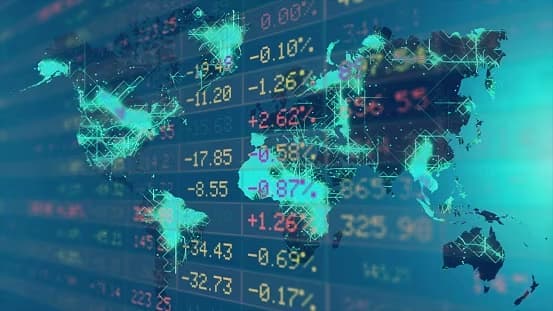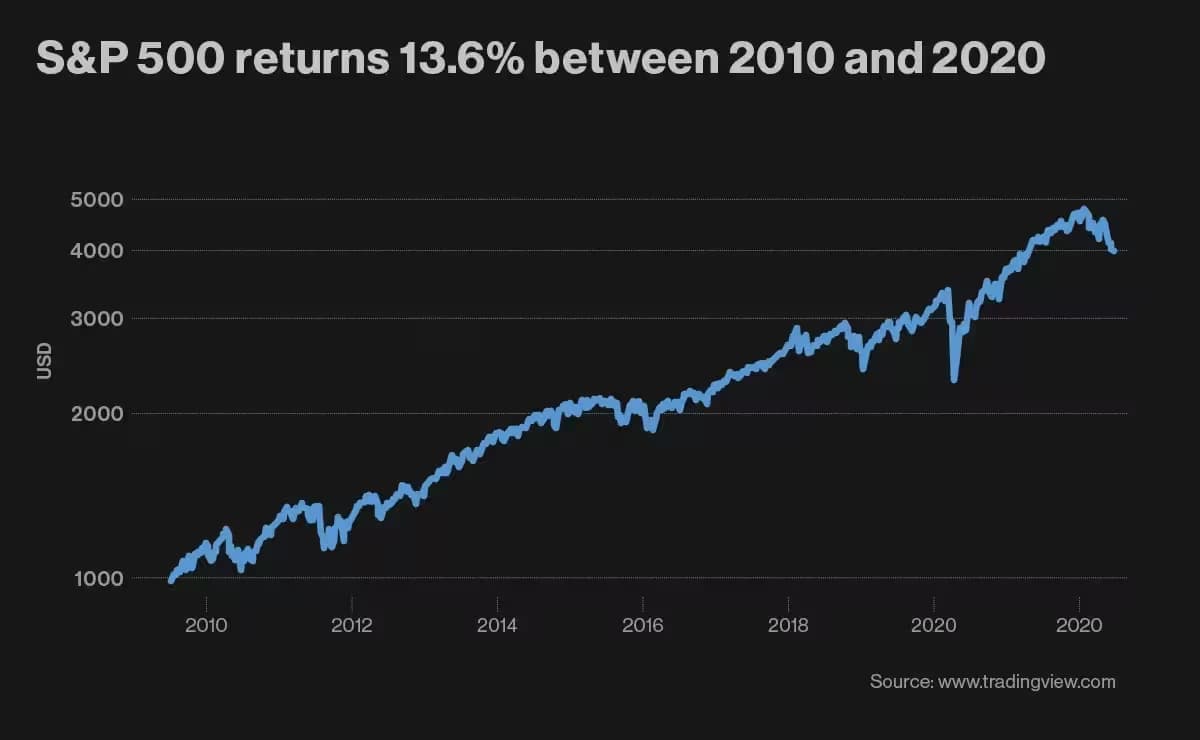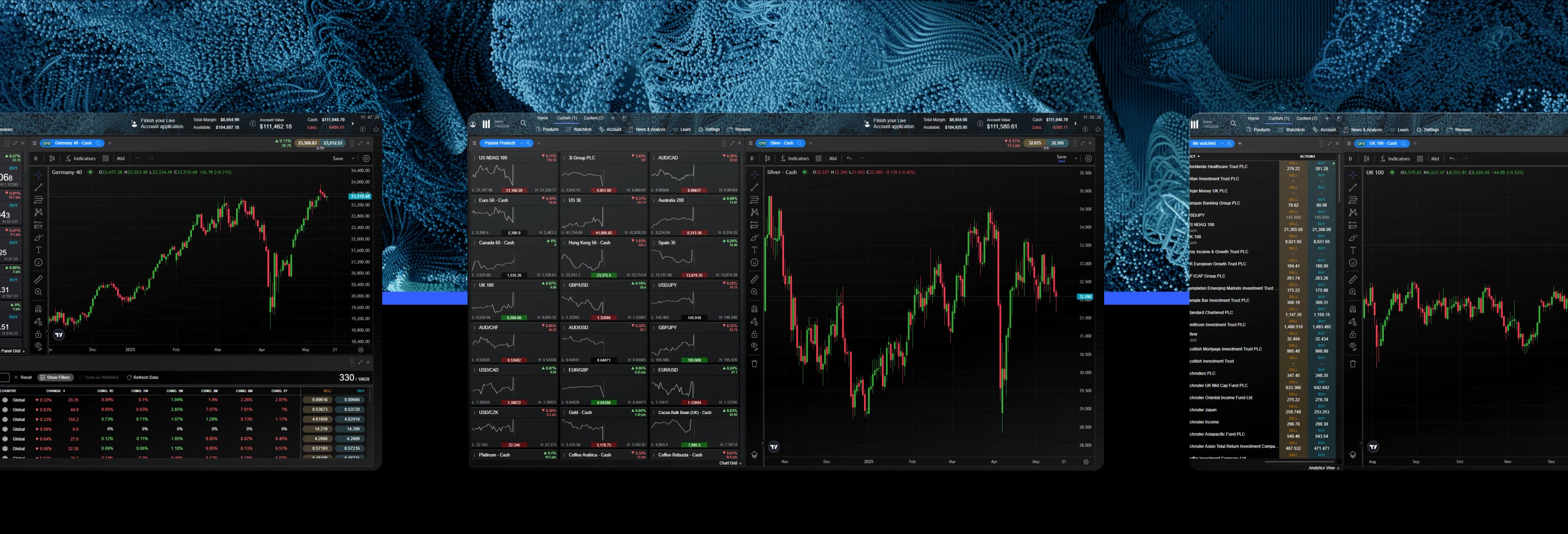
How to start trading on share CFDs
Share trading is the buying and selling of company stock with the aim of making a profit. Shares represent a portion of ownership of a public company. They make up its market capitalization, or in other words, its value. For a trader, share (or stock) trading is one of the most popular ways to invest, but there are different ways you can approach share trading. You can make money trading stocks from home and on-the-go with our flexible and easy to use online trading platform.
Trading on stock CFDs can be an easy, manageable way to grow your money
You can speculate on whether an asset’s price will go up or down using different trading strategies such as buy-and-hold or short-selling
Trading can involve individual stocks or collections encompassing a variety of stocks or sectors (indices and ETFs)
Success requires a knowledge of the market and why shares move up and down, an understanding of how trading works and application of risk-management
You can trade CFDs on 9,800+ stocks in our Product Library
Why start trading?
Trading on share CFDs has the potential to grow your money at a greater rate than in a savings account. Since the advent of the first stock exchange, the market has returned an average 10% per year, while a cash savings account has average 2% interest. Between 2010 and 2020, Goldman Sachs noted that the US stock market’s S&P 500 increased its average annual return to 13.6%.

Naturally, with any form of speculation there’s an element of risk — the wrong trade could lose you a lot of money — but there are some ways to mitigate that risk. And ultimately, the more experienced you become at reading the market, the better you’re likely to get at spotting a stock on the up.
Through our award-winning platform¹, it’s a fairly simple process to open a buy or sell position on a stock, you only have to deposit a certain amount of money depending on the share you choose, and you’re not tied into anything. You can exit your position whenever you want when trading derivative products such contracts for difference (CFDs).
So, before you begin, the first thing to understand is what the stock market is and how it works.
What is a stock market?
A stock market or stock exchange is a financial market in which company stocks are bought and sold. The prices of shares listed on these exchanges are not set by individual companies or the exchange, but by the organic forces of supply and demand. As an equity becomes more desirable and more traders buy it, its price will naturally rise.
Stock markets exist in major cities around the world. The main ones include:
New York Stock Exchange (NYSE)
National Association of Securities Dealers Automated Quotations System (Nasdaq)
London Stock Exchange (LSE)
Euronext (ENX)
Japanese Exchange Group (JPX)
How does it work?
The stock market works by bringing together buyers and sellers on one platform and enabling them to transfer ownership of stocks and shares. Prices of individual stocks are determined by supply and demand. In stocks and shares trading, traders aim to buy stocks at a low price with the hope that the share price will rise in the future so they can cash out on the price increases. However, they stand to lose money if the stock price falls.
How do stocks come to market?
A company initially lists shares for sale when it wants to raise significant capital to fund its continued growth. In making shares of the company available to outside investors, it transitions from a private (for example, privately owned) company to a public company.
The shares are traditionally put up for sale through a process known as an initial public offering (IPO), although some companies can use a special purpose acquisition company (SPAC) that helps to ‘piggyback’ private companies onto the stock market. However, once the shares become available, they are then bought and sold on the stock market as supply and demand dictates.
What is share trading?
When share trading, you buy and take ownership of company stock and sell the stock for a higher price with the aim of making a profit. In this instance, you would normally open a ‘nominee’ account. A stockbroker will often place trades on your behalf, for a small fee. Most share trading takes place on stock exchanges where public companies are listed. This method involves buying and selling shares outright through spot or forward contracts.
Investment is not limited to stock market indices and shares. You can also invest in exchange traded funds and mutual funds. Alternatively, you can use derivative products like contracts for difference (CFDs) to trade shares. This way, you can take a long or short position and take advantage of rising and falling share prices. With CFD trading, you do not take ownership of the actual shares you are trading. You simply speculate on whether you expect prices to rise or fall and take a position accordingly.
What moves market prices?
The price of a stock is ultimately determined by supply and demand. But what drives this? How might you tell if a stock is about to go up or down? As you learn how to trade stocks, here are a few factors that can help you decide which way to bet on an individual stock.
Earnings reports
Major stock exchanges require businesses to release information on their financial performance. If a company exceeds profit and/or revenue expectations, the share price is likely to increase. But if a company misses its targets or underperforms against its forecast, the price will likely go down.
Economics
Macroeconomic forces such as interest rates, inflation and GDP (gross domestic product) can cause shifts in the supply and demand of all industries and therefore all have a knock-on effect on share prices. Traders may keep an eye on the news for events and announcements that may impact the economy as a whole or individual sectors.
Politics
Elections, trade wars, law changes, strikes and other politically motivated events can cause major disruptions and changes in markets. For example, if legislation is about to loosen around a certain industry, it could improve profitability in companies in that sector, and therefore their share prices. Conversely, a trade war might drive a stock price down. If a company is working in an industry that is closely related to political agendas, an event such as a trade war can cause a stock to decrease in price.
What are the different types of equities I can trade?
Analysts and market commentators often split stocks into different categories, dependent on the type of company, value or what they offer, including the following.
Blue-chip stocks: These are the top-performing stocks in a particular industry and often act as a benchmark for their respective industry. Examples of blue-chip stocks include Shell, Visa and Procter & Gamble.
Growth stocks: Companies suspected to grow faster than its competitors. These firms tend to have a sharp focus on innovation, and the stocks tend to do well in a confidence-fueled bull market, but they are also risky as their ultimate performance sometimes doesn’t live up to the hype. Examples include Tesla, Netflix and Amazon.
Value stocks: These trade for a cheaper price than predicted by the company’s financial performance. Value stocks tend to be venerable companies with slow but steady, consistent growth, such as Johnson & Johnson, JP Morgan Chase and Berkshire Hathaway.
Dividend stocks: As the name suggests, this offers a high dividend yield to shareholders, either in the form of further shares or cash. By definition, dividend stocks tend to be more attractive to long-term investors than traders.
Index: This is a selection of chosen stocks that are grouped together with their average price giving a representative view of individual sectors or the market as a whole. The world’s leading indices include the S&P 500, FTSE 100 and the Nikkei 225.
Exchange-traded funds (ETFs): This is not one stock but a basket of equities that tracks a specific index, so all the stocks in it might, for instance, be renewable energy stocks, or tech stocks. These can be traded like shares and many traders prefer ETFs for their instant diversification spread over a number of companies.
Pricing is indicative. Past performance is not a reliable indicator of future results.
Where and how can you get started?
When trading CFDs, you can trade on over 10,000 shares and ETFs on our award-winning platform that is available on both desktop and mobile devices, Next Generation. Designed to be adaptable to your specific trading needs and suitable for traders of all levels, our platform facilitates online share trading by combining the latest innovations with an easy-to-use interface. Learn more about our trading platform >
Managing your risk
Share trading, like all speculation, carries risk. Even though, with us, you are learning how to speculate on shares rather than invest, you are still exposed to the same dangers — stock prices going down, a company suddenly going out of business, or the entire market crashing, such as in the financial crisis of 2008 when the FTSE 100 nearly halved in value in just a few weeks, or in March 2020 when the Covid-19 pandemic wiped billions of dollars off share prices in a couple of days. You can manage this risk, however, through diversification across multiple companies and sectors, to prevent putting all your traded eggs in one basket. Certain types of stock tend also to carry less risk than others – blue-chips are statistically more likely to be reliable, but calamity can happen to any company at any time. Read our risk-management guide for advice and tips before placing a trade.
Does it cost to trade?
Yes, and the main fees applicable include the following:
See our trading fees in further detail.
In order to avoid extra costs as much as possible, many traders decide to use ETFs which come with zero commission fees and lower holding costs than individual shares (other fees may apply). These can also help to diversify your portfolio while spreading risk across multiple assets using one single position, so these may be beneficial to traders opening multiple positions throughout a single trading day.
2Reuters news ticker is a registered trademark of Thomson Reuters®. Refinitiv® Morningstar is a registered trademark of Morningstar Inc.
30.009 seconds CFD median trade execution time on CMC Markets' web and mobile platforms, 1 April 2024-31 March 2025.+
